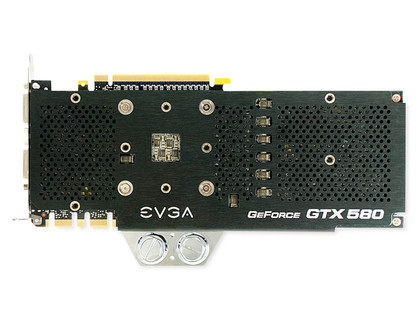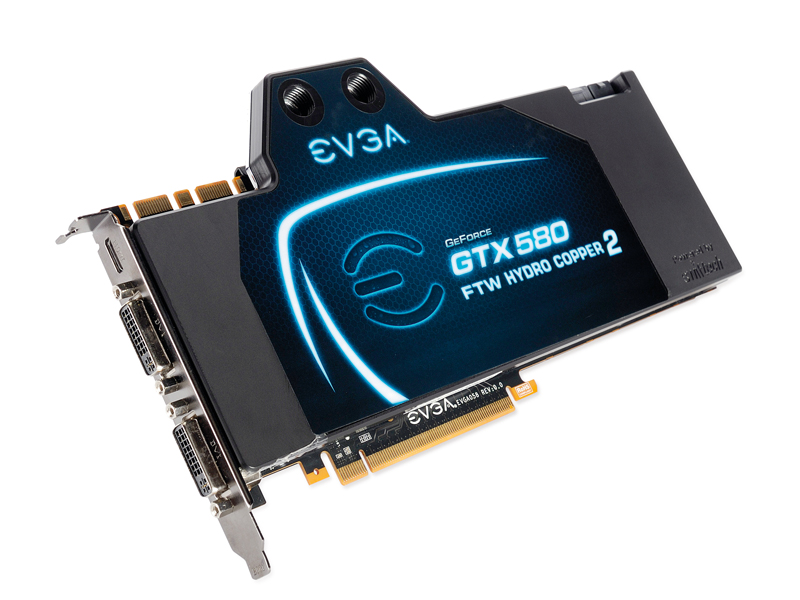TechRadar Verdict
Pros
- +
Lovely looking and silent
- +
Top class performance…
Cons
- -
…but not by much
- -
Ludicrously expensive
Why you can trust TechRadar
Water, water everywhere but you really don't want to drink this stuff. Because it has coolant in it, and you will die. Or at least have a nasty tummy ache for a while.
The GTX 580 Hydro Copper 2 is EVGA's monstrously OTT take on the Nvidia GeForce GTX 580, a GPU that already has the honour of being the fastest single chip graphics processor around.
EVGA reckons that's not good enough, though, and has kitted its flagship card with the company's FTW Hydro Copper 2 water cooler, ready to be plumbed into your liquid-chilled system for that little bit of extra performance that air cannot provide.
If you've already got a water-cooled system and want a graphics card that wants to get wet with it, it's a tempting prospect. There are just two things to bear in mind: You could buy a stock GTX 580 and fit a water cooler yourself. This is, of course, slightly riskier and won't come with EVGA's lifetime guarantee, but you could do it for over £150 less than this if you shop around. Alternatively, you could go for a lot more in-game performance and pick up a dual chip GTX 590 for roughly the same price.
Against those two alternatives, EVGA's GTX 580 FTW Hydro Copper 2 had better be something special.
Standard fair

The GPU itself is relatively uninteresting. Beyond being a GeForce GTX 580, there's very little in the way of modification to its set-up.
EVGA's surrounding components are all top class, with 0.4ns memory soldered in. But then it's hard to find a GTX 580 that doesn't have decent transistors and memory on the PCB. It's the flagship card in most companies' stacks.
Sign up for breaking news, reviews, opinion, top tech deals, and more.
It has the standard 512 CUDA cores typical of all GTX 580s, and a massive 204GB/s maximum memory bandwidth. It requires both an 8-pin and a 6-pin PCIe power connector, and EVGA recommends a power supply of at least 600W to get it going.
Cool block
Much more interesting, though, is that water-cooling block. It's very well put together and pre-fitted and covers both GPU and memory in a solid and sleek black sheath. The straight lines are broken only by the illuminated EVGA logo on the top corner.
The cooling block itself is made from chrome-plated C110 copper – a measure of high purity – and the inlet and outlet pipes jut out from the side near the SLI ports. You can plumb the card in exactly as you choose.
Inside the box are stoppers for whichever side of the card you don't want the pipes sticking out of, and there are both in and 3/8-inch connectors and clips for the piping, depending on what diameter tubes you have in the rest of your system. You'll need to supply the tubing separately, along with a pump and fan assembly if you don't already have one.
Which brings us onto one of the problems this card faces: this kind of water-cooling is a dying art, on account of the fact that most liquid cooled CPU heatsinks now are self-contained systems, such as the CoolIT and subsequent Corsair systems we've reviewed in the past. You can't add extra components to those – so is it worth investing in all the peripheral gubbins to build a fully water cooled system yourself?
